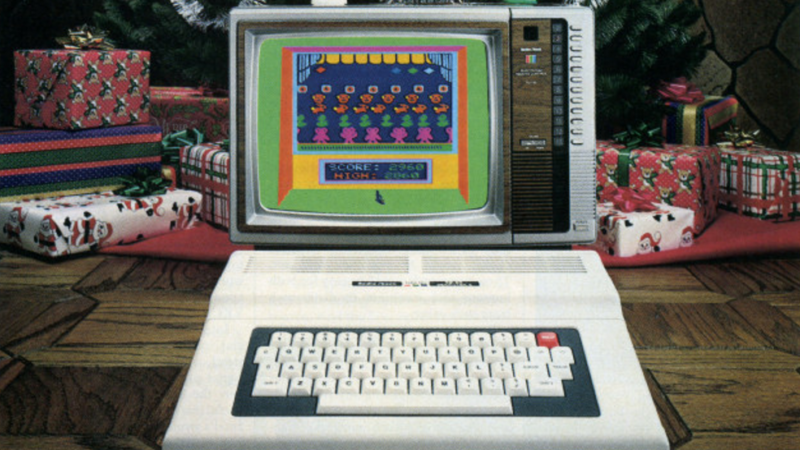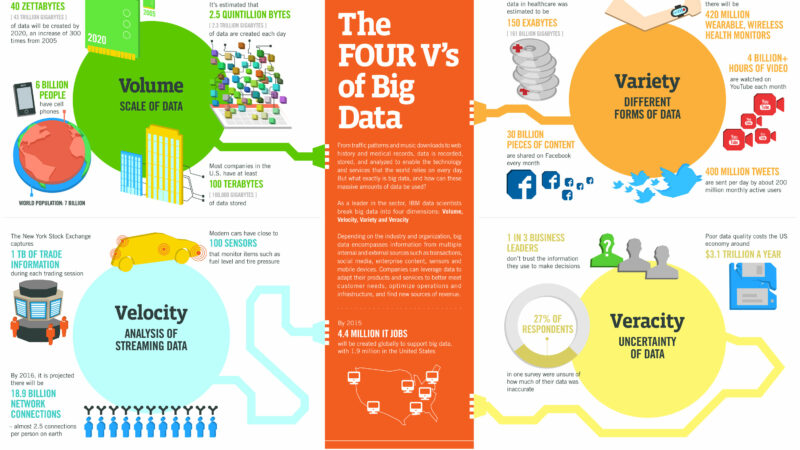Toys and Big Data
“Dad, if my character dies in the game, would I die in the real world?”
What a beautifully naive question that my son, Trevor, asked me during a son-dad conversation about how games might change over the years.
Earlier last year, Mattel’s CEO, Bryan Stockton, was fired. After three years, it was clear that Mattel was continuing to be challenged with sales weakness, and lower gross margins, which drove down shareholder value.
As parents, we ALL know that it’s a very competitive toy aisle, and our kids are much different than we were at their age.
Mattel’s toys haven’t been “good enough” at a time when peers like Hasbro and Lego continue to report higher and higher sales. It’s not just Mattel. Nintendo, the one-time market leader video games brand best known for legendary characters like Super Mario, has been struggling to keep up with the times as mobile gaming explodes and “next-gen” consoles become cutting-edge.
So what’s happening to the toy market?
A New Toy Generation
I grew up as a child of the RPG generation (Role-Playing-Games), starting with my own “Ken and Barbie” equivalent with my Hasbro Stretch Armstrong. I then graduated to the Lego era (starting with my Grandma’s Legos from Berlin), to my favorite era of HotWheels, and then Mattel Tyco Toys slotcars (by the 1980s, Tyco dominated the electric slot car racing market as well as the radio control category. Mattel acquired them in 1997).
I had a wonderful childhood of imagination where I played the roles of many super heroes on many adventures. As parents, we forget how wonderful our “inner stories” and games were.
“Dad, I’m busy right now. I’m in the middle of a story.”
My son would stare out the car window telling himself a story….imagining himself in the middle of some wonderful scene…something he thought up as part of his own imaginary world. I love watching him and his brother, Devon, role playing battles, creative worlds, that they both dream up daily.
So why isn’t Ken and Barbie, MegaBloks (Mattel’s version of Legos), and their many other brands like BOOMco not fueling this new generation of creatives, like it did mine?
How Are Kids Engaging Today?
I’ve never graduated from being a kid. Some of my friends say that I’m just a kid in an adult body. I recall telling my high school friends that I couldn’t wait to have children, just so that I could play with their toys.
Clearly the answer to the Mattel dilemma varies a bit based on age. However, there is a common theme, starting even with the youngest children – It has to do with the fact that most of our world is becoming digital.
For decades, children’s “digital experience” was essentially limited to watching television or listening to music. Few parents complained about a child becoming addicted to listening to music, or being addicted to television. However, it has now been a growing concern among parents, and has now extended beyond TV.
Today, parents not only need to be vigilant about how much television their children watch, but the many other forms of media coming from the internet, smart phones, iPods, iPads, Wii games, and the like.
Kids today spend over 50 hours of “screen time” every week. In our family, “screens” include the TV, any computer device, and any phone. Kids will go to many extremes to get on a “screen”.
“Trevor…Devon, where are you?”
My wife will call my boy’s names to find out where they are in the house…only to find them tucked under the crawl space under their beds hiding behind their respective screens.
The media content they consume has a profound impact on their social, emotional, cognitive, and physical development. Learning how to use media and technology wisely is an essential skill for life and learning in the 21st century. But parents, teachers, and policymakers struggle to keep up with the rapidly changing digital world in which our children live and learn. Now more than ever, they need a trusted guide to help them navigate a world where change is the only constant.
RPGs Evolve to MMORPGs in the Digital Domain
Role playing with action figures has evolved into a suite of digital and virtual environments that provide massively multiplayer online role-playing game experiences. Why wouldn’t my kids want to move from playing with their lego figures to playing minecraft with a host of their friends? In fact, games like Wynncraft and Phyria are bringing digital games for kids to a whole new level. But this all scares me.
Do I want my kids to connect with their friends through a screen….or, rather, be outdoors with their favorite toys? In both cases, their creative natures are fueled. I’ve seen some very creative minecraft worlds constructed by both boys. But I’m torn. I think I’d prefer to see that same “world” constructed in legos in the backyard, hidden under a wood box with rocks on it. Wouldn’t you?
How do we combine offline and online experiences, providing a healthy balance?
Toys + Gaming = IGTs (Interactive Gaming Toys)
According to the NPD Group, three out of four parents (77%) stated purchasing an IGT, a new generation of toys, was worth the investment compared to other types of toys or games that could have been purchased. Almost two-thirds of parents stated that they are extremely or very likely to purchase a new IGT game (65%) or a new character (67%) in the next six months. So what is an IGT? Also known as “Toys to Life“, it’s an approach where our children’s toys become more real:
- LEGO Dimensions: Lego Dimensions is an upcoming Lego action-adventure video game developed by Traveller’s Tales and published by Warner Bros. Interactive Entertainment, for the PlayStation 4, PlayStation 3, Wii U, Xbox One, and Xbox 360. LEGO has grown the dollar share of females in recent years. So, with LEGO Dimensions there is potential to shift the IGT consumer to be slightly more female.
- Star Wars with Disney Star Wars 3.0: Disney Infinity 3.0 is an upcoming action-adventure sandbox video game published by Disney Interactive Studios and LucasArts for the Microsoft Windows, PlayStation 3, PlayStation 4, Wii U, Xbox 360 and Xbox One, and the third installment in the toys-to-life Disney Infinity series. Star Wars has cross-generational appeal, playing into the fact that IGTs target parents as well as children.
- Amiibo: Much like Star Wars, Nintendo’s cast of characters has a cross-generational appeal to gamers. Many gamers grew up on Mario and Zelda, which has the potential to draw in a new, potentially older consumer into the IGT space.
- Skylanders: Activision created this gaming segment, and each year they have innovated on the initial Skylanders concept. Ideas like Swap Force and Trap Team added new gameplay elements to the experience in recent years. Though details are scarce on a new Skylanders, I am looking forward to seeing what Activision has up their sleeves (likely to be revealed at E3 this year) and how it could also expand the market.
These are a combination of toys and digital games, combining the physical and digital worlds. It’s an interesting direction…one fueled by the interest of the next-generation child.
Toys & Big Data
CEOs of fortune 1000 companies all over the world invite my team into the board room to discuss how information (data) can help them truly become digital. Why? Because they know that data is at the center of their business. Data is at the core of a future suite of digital applications delivering new customer experiences.
This is all about “re-imagining” your business, by starting with the customer’s digital experience. In this case, it’s our children.
If you were Christopher Sinclair at Mattel, what would you be dreaming up for your children’s world of toys? Lets imagine a combined physical and virtual world that provides a completely new digital experience for our children. This is what Mattel’s senior team has begun.
In February this year, Mattel announced that it will offer “experience reel” cards that will offer exclusive content that will be available as a Google Cardboard application, specific for Mattel customers. This means that you can wear Mattel toy glasses and combine your physical and virtual worlds. You can enter into Barbie and Ken’s virtual world.
Imagine your children taking your home and painting it with colors they like, adding virtual furniture they prefer, hanging their own art on the walls, interacting with their favorite characters in various rooms.
Mattel also announced its partnership with San Francisco startup ToyTalk, which through a cloud-based app can enable your toys to have conversations. This supports the idea of conversational play. The doll uses speech recognition to record your kid’s conversations and store them in the cloud. The doll records any human speech it detects in an effort to intelligently respond. So, any human conversation within its hearing can be stored in the cloud and analyzed. On Christmas Day, Barbie could ask a child what they received from Santa. Or Ken could ask, “What do you want to be when you grow up?”
Digitally-enabled toys? Digitally-enabled play experiences? Combined physical and virtual worlds? MMORPGs? IGTs?
I’ve been involved with data and analytics infrastructure since I can remember….the early 1980’s. I’ve been trained on the nuances of how to collect, store, analyze, and operationalize data for a variety of use-cases for my entire career.
What I see, is an infinite number of opportunities to leverage data for a host of new educational, personalized, engaging toy applications. When you know what your child is thinking, interested in, worried about, toys can become a gateway for not only a personalized experience (e.g. when a toy responds back to your child, addressing them by their name), but the toy can listen to their worries and alert us parents about opportunities to assist in addressing our children’s fears, their curiosities, their thirst for knowledge.
Toy makers can use the same information to better classify children, constantly improving on their toy designs, their games, their educational curriculum.
“Dad, can we turn our house into legos?”
Imagine….a digital world where anything is possible:
- Your family is in a rush to leave the house. Your toddler starts screaming because he can’t find his favorite stuffed animal. You pull out your iPhone and receive a signal that the animal is in the bathroom upstairs. You retrieve it in two minutes versus an hour long, blind search.
- Imagine all Barbie dolls have iBeacons. If there is another doll in the area (with another girl), you could find her to see if she wanted to play. iBeacons could take ‘hide n go seek’ or tag to the next level.
- Turn the real world into a secret virtual game. With all players outfitted with a Mattel toy iBeacon on them, you can play an impromptu game of freeze tag, meet the new flash mob game, etc.
- You’re at Comi-con (a conference for comic fans), and your child would love to “run into” their favorite character. Pull up the event’s application and see a signal where that character is. When you’re nearby, tell you kid to close her eyes and make a wish to see if we can make the character appear. Within moments, the character comes around that corner and a wonderful memory was just made.
- A child walks down street with connected baseball glove. As he or she walks by houses on his way to the park, other kids’ connected baseball gloves start to buzz. They look out the window, see a neighbor kid heading to the park, and go outside to play a pickup game. Technology brings back the “good old days” when kids actually played games in parks with other neighborhood kids.
These are just a few fun ideas from Jen Quinlan, who brainstormed a few ways that iBeacon technology could be applied with real-time analytics, contributing to a new digital world with new interactive digital applications.





Digitally enabled toys can provide product analytics in ways that were impossible before. Possibly just as Product Analytics is used within software products (e.g. Outlook suggesting a new Rule based upon usage), the toy could adapt its character. For instance, the toy could play a song that is trending, and other children of the same age are interested in, and listening to (analytics data streamed in from Apple music perhaps). At an abstract level, there are 2 possibilities:
Adaptive toys – where Big Data is used to influence the toy’s behavior and function.
Toy analytics – rich information on how the toy is being used, which aspects are more popular, to allow designers to adapt their next iteration. Perhaps we can even enable A/B Testing and multivariate testing with digitally enabled toys.
Imagine if the Digital creations within the game were to magically appear in the physical world. The kids would spend their time in the morning creating the worlds and the context, and would be rushing into the Dome in the afternoon to see if their creations had gotten created, and how it looked. Perhaps they even engage with finishing up the physical creation, and play for a while there – perhaps solve a puzzle, or interact with a character they created. Done in a creative enough way, this could become an educational situation. The wizard they created online has come up with a magic potion, but is struggling with finishing the final inorganic compound that will make it combust (in a controlled way of course). Or the Batcar they created, got 3D printed, but has a mechanical flaw. Physics, Math, Chemistry, Engineering – anything could be taught in this way. In fact it would be the best way to engage the child’s whole brain in learning through solving in the context of their own creation.
Why open up a browser or pick up your phone to have digital interactions, if you can do it directly through the toy?